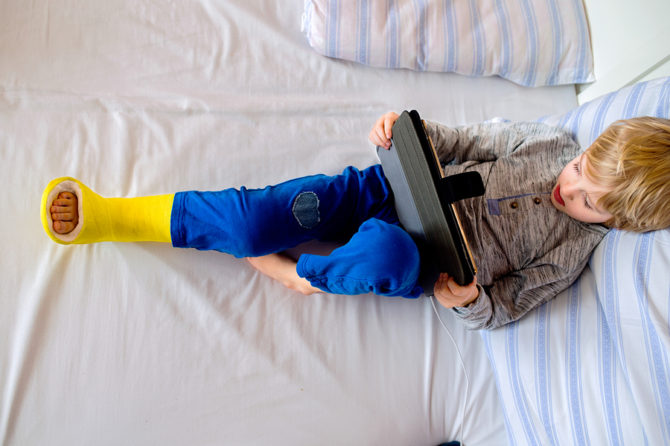
Pediatric Fractures – What to Know
I remember how adventurous I was as a child—seemingly fearless. I had not a worry in the world, and I felt I could accomplish anything. That all changed when I was in third grade.
I was making my lunch, and I had to climb on the counter to reach the bread for making a sandwich. This was something I was NOT allowed to do—ever. When I jumped down, I fell and heard a sickening crunch as I landed on my arm. I ended up in a cast for six weeks.
All About Fractures
About 50% of both girls and boys will experience a broken bone before adolescence. But given the adventurous nature of children and toddlers, it’s amazing there aren’t more broken bones out there.
It’s important to understand the ins and outs of what makes broken bones in kids different from adults. The classic signs of a broken bone (swelling and pain) are the same at any age. Yet in kids, it is often harder to tell.
Other signs of a broken bone include:
- Inability to move the affected bone
- Visible deformity
- Audible noise during the injury
- Severe bruising
But there is another big difference between children and adults. Children’s bones are still growing and have open growth plates (places where bones are still forming or fusing). Broken bones involving these areas require more attention to treat and can often need surgery. This is particularly true in the bones of the foot and ankle.
What to Do…
It is very important for children to have any foot or ankle injury examined by a podiatrist. Even though their bones tend to heal well, long-term negative consequences of poor healing are worse in the pediatric years.
The doctors and nurse practitioners at the FAAWC will make treatment as painless and easy as possible. We also have all the cool cast colors! Call for an appointment. We offer urgent bookings to save you a trip to the emergency room. Don’t leave your child’s foot or ankle injury to chance. See an FAAWC podiatrist today.
Leave a reply